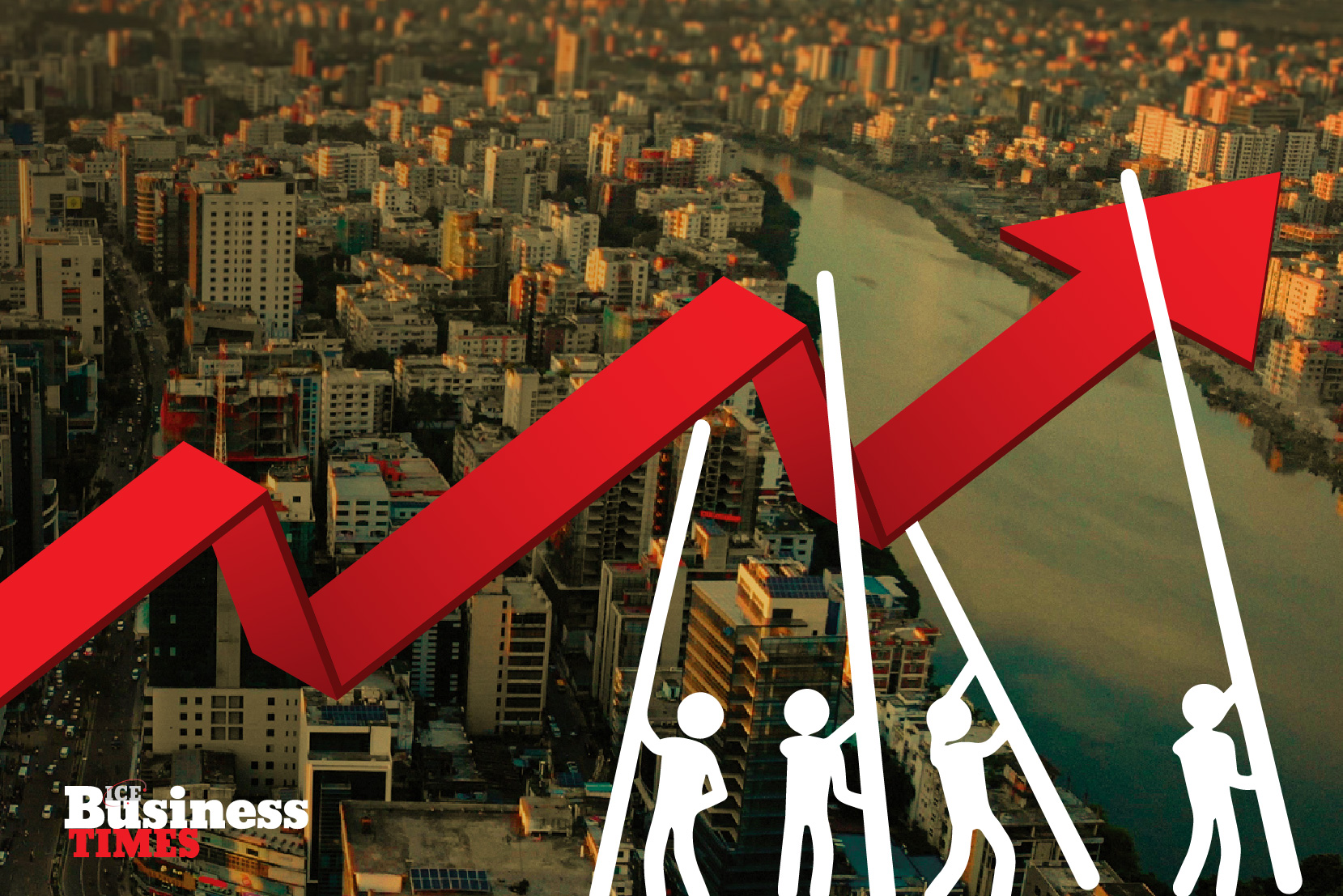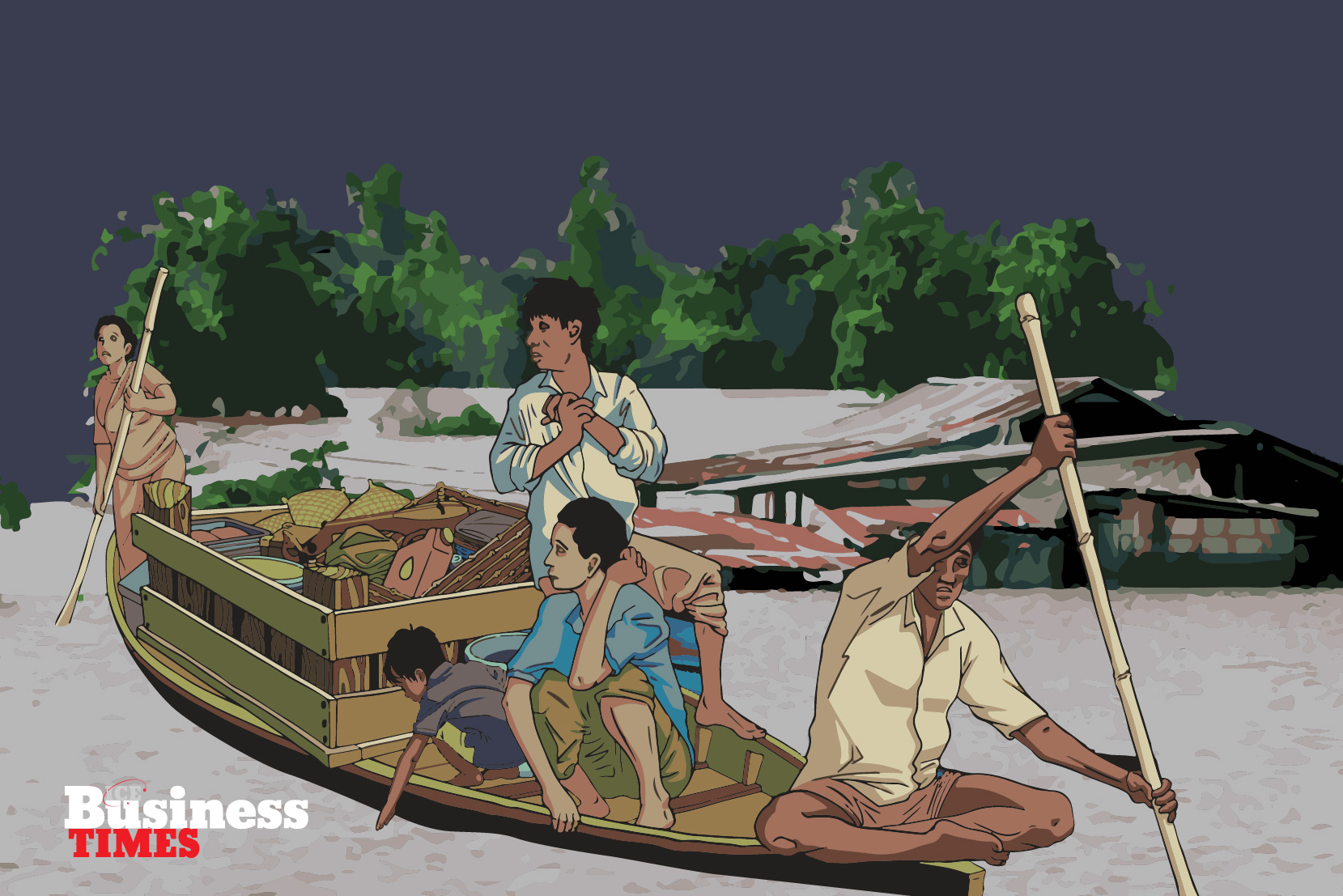Challenges and prospects of ecommerce in Bangladesh
Since the early 2000s when Bangladesh lacked extensive internet access and a solid online transaction system, the e-commerce sector has grown dramatically. The Bangladesh Bank, the country’s national bank, began allowing internet transactions in 2009. The Bangladesh Bank allowed international credit cards to be used to buy and sell goods and services online in 2013. According to the Bangladesh Telecommunication Regulatory Commission (BTRC), there are 117.3 million internet users in Bangladesh as of May 2021, with just 9.8 million using broadband connections and the rest using mobile internet. Facebook has over 2,000 e-commerce sites and over 50,000 e-commerce pages, making it a popular platform for advertising and selling things. The sector has seen strong growth in previous years, but after the emergence of the COVID-19 pandemic in 2020, development has increased as more consumers are inclined to shop online. According to the e-Commerce Association of Bangladesh (e-CAB), government reports, and industry insiders, online sales in Bangladesh increased by about 70% in 2020 compared to the previous year, with the industry’s market size reaching nearly USD 2 billion in August of 2021. According to E-CAB Vice President Mohammad Sahab Uddin, the sector’s valuation in 2021 may have surpassed BDT 20,000 crore, or USD 2.32 billion. By 2023, the market is expected to reach USD 3 billion in size.
Bangladesh’s first full-fledged e-commerce company, akhoni.com, was created in 2011 and later rebranded as bagdoom.com in 2016. In 2011, ajkerdeal.com, another online shopping platform, was founded. Meanwhile, the advent of 3G internet technology in Bangladesh in 2012 expanded internet penetration, and e-commerce in the country began to gain much-needed impetus. In the same year, rokomari.com, an online bookselling platform, was created, following in the footsteps of global e-commerce behemoth Amazon.com. Rokomari, one of the country’s most popular bookselling e-commerce platforms, is currently expanding into other product categories such as electronics and stationery. Meanwhile, Bikroy.com, which launched in October 2012, has grown to become the country’s largest C2C and B2C consumer product marketplace. Multiple players have followed, with the country now having the presence of global e-commerce players such as Daraz; with its operations in Nepal, Pakistan and Sri Lanka as well as in Bangladesh.
Apart from the growth potential that e-commerce has in Bangladesh, there are also key challenges that need to be addressed. The following are some of the challenges of the e-commerce landscape in Bangladesh – inadequate delivery mechanisms, a low internet adoption rate, a lack of a robust online transaction systems, the prevalence of online fraud, undeveloped online marketing tactics, and a lack of a comprehensive privacy policy.
For the vast majority of the people, cash transactions remain the most common mode of financial transaction. According to e-Cab’s research, more than 90% of Bangladesh eCommerce consumers prefer the cash-on-delivery payment option. To simplify credit card transactions, most e-commerce company portals in Bangladesh have integrated merchant accounts. Almost all e-commerce websites, however, accept a variety of additional payment methods in addition to the consumer-favoured cash-on-delivery system. Only a small percentage of e-commerce enterprises operate on the basis of only delivering products after obtaining payment by wire or bank transfer.
Challenges lie on the consumer end as well. Recent industrial hitches have shown us that all is not well, and while there has been tremendous growth in this sector in the last decade as a result of infrastructure and technological advancement in the country, it is nowhere near that of our neighbours. In the years 2018–2020, India grew by nearly 40% year on year. Let us investigate why, despite the fact that our economy has been operating well and increasing at or beyond that of our neighbours for years, we have not been able to attain equivalent growth. Customer penetration is hampered by a variety of causes, including operational constraints, culture, and a general lack of digital knowledge.
According to E-CAB Vice President Mohammad Sahab Uddin, the sector’s valuation in 2021 may have surpassed BDT 20,000 crore, or USD 2.32 billion. By 2023, the market is expected to reach USD 3 billion in size.
In Bangladesh, we have a few traditional courier delivery services, and in recent years, modern app-based delivery service providers have been able to support quick delivery, although these services are primarily limited to Dhaka and a few other cities. We are a relatively small country, therefore the distance between key hubs in Dhaka and other cities is substantially shorter than in many western countries, yet we need a strong and consistent delivery route on which buyers and sellers can rely. Last-mile delivery refers to the precise journey of a goods from the hub to the consumer’s doorstep, and there is still a long way to go in terms of developing a scalable and cost-effective digitally enabled workforce and courier solution. While the rest of the world is experimenting with sustainable drone technology powered by AI to deliver products and services, we are lagging behind because we still lack reliable services. Another issue is package quality, as corporations try to save money by utilising less expensive packaging at the risk of destroying the contents.
Inventory management is also a problem that needs to be looked at. Many of the merchants or dealers listed on many e-commerce platforms, as well as on Facebook pages, do not have their own inventory or business. These are essentially resellers who, after receiving an order, obtain the goods from another wholesaler or local merchant and then resell them on the internet for a profit. This is a fine business strategy in and of itself, but when a substantial section of the sellers source items upon order, there is usually a longer turnaround time, which lengthens the overall process, and there is a delivery delay because they are delaying sending their product to e-commerce hubs. This is one of the main reasons why many customers choose to buy from real stores rather than wait a long time for items, as there is no guarantee that they will arrive on time. There is also a small percentage of vendors that take advantage of the system by selling inferior products or products at a cheaper price than what is advertised on their websites or pages.
As a result of all of this, consumers are unable to entirely trust online suppliers or e-commerce sites. As a result, the sector’s growth is slower. In recent years, there have also been difficulties with numerous e-commerce sites not being upfront with customers about the things they will receive and when they would receive them. These occurrences are harmful to industry growth, and when they occur frequently, consumers lose faith in the industry as a whole. As a result, consumer trust is currently in poor shape. As a result of all of these difficulties, overall consumer satisfaction is currently in poor health.
When accusations against a number of e-commerce companies began to surface last year, the lack of effective e-commerce regulation provoked a lot of debate. Amid a storm of misconduct and abuses of consumer rights by various e-commerce firms, the authorities established the Digital Commerce Operation Guidelines in July 2021.
Efforts have been undertaken to stabilise the sector by adding additional rules to the guidelines. There are specific directions for product delivery, pricing, and exhibiting in the rules. Bangladesh Bank has already begun using the escrow service, in which Bangladesh Bank acts as a third party by accepting payment against the transaction and delivering it to the selling party after the product is delivered, in accordance with the requirements.
Another significant impediment to expansion is the bulk of consumers’ lack of digital literacy and education. Although using an app or a website to place an order does not necessitate a great command of the English language, there is nevertheless a growing worry about digital literacy. Outside of urban regions, especially in impoverished or rural populations, it is frequently a substantial difficulty. Individuals’ digital literacy refers to the abilities and knowledge they have that allow them to access and use information digitally, as well as take use of various programs, websites, and social media platforms. In Bangladesh, however, there were 47.61 million internet users in January 2021, up 8% from the previous year. Internet usage is at an all-time high, thanks to cheaper devices, infrastructure improvements, and the pandemic. This is a sign that consumers are adapting to technology more quickly. The rise of MFS in Bangladesh is also expanding, indicating that e-commerce has a bright future ahead of it.
“In five years, the e-commerce sector will be a more developed market than it is now. We believe that, as a result of the new regulations, the market will be able to serve more clients in the shortest amount of time. Without a doubt, we will see brick-and-mortar stores become increasingly digital. Hyperlocal communities of retailers will emerge, serving as neighbourhood hubs and serving as the heart and soul of most e-commerce businesses. We’re seeing a lot of investment from the government and the business sector, as well as logistic companies generating money to improve last-mile product delivery. We feel these will be game changers for the e-commerce companies in Bangladesh, as interest in semi-urban and rural locations is increasing. Bangladesh is on the verge of a digital revolution, and e-commerce will be at the forefront,” says an industry insider.
















